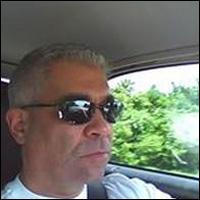By Russ Martens and Pam Martens: July 14, 2014
Since December of last year, JPMorgan Chase has been experiencing tragic, sudden deaths of workers on a scale which sets it alarmingly apart from other Wall Street mega banks. Adding to the concern generated by the deaths is the recent revelation that JPMorgan has an estimated $180 billion of life insurance in force on its current and former workers.
Making worldwide news last week was the violent deaths of JPMorgan technology executive Julian Knott and his wife, Alita, ages 45 and 47, respectively, in Jefferson Township, New Jersey. However, two other recent, sudden deaths of technology workers at JPMorgan have gone unreported by the media.
The bodies of the Knott couple, who have a teenage daughter and two teenage sons, were discovered by police on July 6, 2014 at approximately 1:12 a.m. According to a press release issued by the Morris County Prosecutor’s office, Jefferson Township Police Officers Tim Hecht and Dave Wroblewski responded to the Knott home located in the Lake Hopatcong section following a “report of two unconscious adults.”
Who made the call to police and whether the children were home at the time has not been announced by the police or the prosecutor’s office. After a preliminary investigation, the police announced on July 8 that they believe Julian Knott shot his wife repeatedly and then took his own life with the same gun.
Friends and colleagues say Julian Knott was a kind and thoughtful individual. The idea that he would orphan his three teenage children, leaving them with the memory of the brutal murder of their mother at the hands of a father they loved and trusted, is causing shock and disbelief among relatives and friends in the U.K.
The Morris County Prosecutor’s office has said the “investigation is ongoing” and anyone with information is asked to contact First Assistant Morris County Prosecutor Thomas Zelante at 973-285-6252 or by email to tzelante@co.morris.nj.us
Knott had worked on JPMorgan computer networks in London since 2001, initially on behalf of Computer Science Corporation and, later, IBM, according to his LinkedIn profile. In January 2006, Knott formally joined JPMorgan Chase in London and worked there until July 2010. At that time, Knott transferred to JPMorgan’s sprawling operations in Columbus, Ohio and eventually rose to the rank of Technical Director of the Global Tier 3 Network Operations. Knott relocated again in September 2012 in order to work at the high tech Global Network Operations Center of JPMorgan in Whippany, New Jersey. He received a promotion in January 2014 to Executive Director.
Knott’s years at JPMorgan in London overlapped with those of Gabriel Magee, a JPMorgan Vice President who worked in computer infrastructure. Magee, aged 39, is alleged to have leaped from the rooftop of the 33-story JPMorgan London headquarters at 25 Bank Street on the evening of January 27, 2014 or the morning of January 28, 2014. Despite initial London newspaper reports that the jump was observed by “thousands of commuters” and JPMorgan colleagues, the coroner’s inquest on May 20 of this year revealed that not one eyewitness actually saw Magee leap from the building. Nonetheless, based on evidence produced internally by JPMorgan, the coroner ruled that Magee’s death was a suicide.
Six weeks before Magee’s tragic death, another sudden death of a technology worker at JPMorgan Chase occurred in Pearland, Texas. Jason Alan Salais, age 34, was standing outside a Walgreens on the evening of December 15 and died of a sudden heart attack according to a family member. Prior to joining JPMorgan in 2008, Salais had worked as a Client Software Technician at SunGard and a UNIX Systems Analyst at Logix Communications. Wall Street On Parade previously reported on the death of Salais.
Just 13 days before Julian and Alita Knott were found dead in their home, another highly skilled technology worker at JPMorgan died suddenly. This death has not previously been reported by the media. Richard Gravino, age 49, was an Application Development Team Lead for JPMorgan in Tampa, Florida. His death occurred on June 24, 2014 at his home in Riverview, Florida. The Hillsborough County Medical Examiner’s office said the cause of death is “pending” with toxicology tests not expected back for 8 to 12 weeks.
Gravino had an extensive and accomplished career in the computer technology field. Previous employers included Motorola and HSBC bank where he was a Senior Technical Consultant.
In the month prior to Gravino’s death, on May 7, 2014, Thomas James Schenkman, age 42, died suddenly in Connecticut. (Schenkman’s death has not previously been reported by major media.) Schenkman held the high rank of Managing Director of Global Infrastructure Engineering for JPMorgan Chase and had a highly marketable resume. Schenkman began his technology career with Microsoft, where he worked for 11 years. He moved on to Goldman Sachs in 2000 and worked there for six years. In 2006, Schenkman moved to Bear Stearns and was there at the time of its collapse in March 2008. Schenkman had been with JPMorgan for the past six years.
According to the Office of the Chief Medical Examiner in Connecticut, which only gets involved in an investigation if the death is “sudden, unexpected, or violent,” the initial cause of Schenkman’s death was listed as “pending.” It has since been amended to read: “atherosclerotic coronary artery disease.”
This Chief Medical Examiner’s office is the same one that investigated the death of JPMorgan Executive Director, Ryan Crane, age 37, who died suddenly at his home in Stamford, Connecticut on February 3, 2014. The Medical Examiner did not release the cause of death for approximately three months, finally assigning it to ethanol toxicity/accident. Crane was not directly engaged in computer technology but his work in algorithmic trading may have led him to interact with various technology teams at JPMorgan.
The Justice Department, the FBI, Congressional committees and the New York State Attorney General’s office are currently investigating if the stock and futures markets have been rigged by some Wall Street firms using high speed computer technology in conjunction with algorithms deploying artificial intelligence. The investigations gained momentum after bestselling author, Michael Lewis, brought details of the allegations to light in his new book, Flash Boys, and shared the allegations with millions of Americans in a March 30 appearance on Sixty Minutes.
The sheer quantity and persistence of the sudden and/or violent deaths related to JPMorgan is raising eyebrows both in mainstream media and the internet. In addition to Magee, a JPMorgan employee in Hong Kong, 33-year old Dennis Li (Junjie) is alleged to have leaped to this death on February 18, 2014 from the 30-story Chater House office building where JPMorgan occupies the top floors. Days went by with no clarification from JPMorgan as to Li’s job function at the firm.
The South China Morning Post published three articles calling the man an “investment banker.” The Standard newspaper in Hong Kong said Dennis Li was an accounting major who worked in the finance office at JPMorgan. The China Times called Li a “Forex trader.” Despite multiple requests from Wall Street On Parade, JPMorgan has declined to clear up the confusion.
Then, on March 12, 2014, there was another alleged leap from a building – this time in Manhattan. Kenneth Bellando, age 28, was found dead outside his six story apartment building. The young Bellando had previously worked for JPMorgan Chase as an analyst and was the brother of JPMorgan employee John Bellando, who was referenced in the Senate Permanent Subcommittee on Investigations’ report on how JPMorgan had hid losses and lied to regulators in the London Whale derivatives trading debacle that resulted in depositor losses of at least $6.2 billion in the commercial bank of JPMorgan Chase.
During the full year of 2008, the period of an epic financial collapse and tens of thousands of job terminations on Wall Street, the New York City Department of Health reported only 93 deaths resulting from leaps from buildings in Manhattan and boroughs. The 93 deaths represented just .000011625 of the City’s population of 8 million. JPMorgan’s global workforce population is 260,000, including full time and part time employees. And yet, two of its current workers and one former worker allegedly leaped from rooftops in January, February and March.
JPMorgan’s peer banks, like Citigroup, Bank of America Merrill, Goldman Sachs, and Morgan Stanley have not reported any suicides resulting from leaps from buildings in 2014 nor have they had an alleged brutal murder-suicide by a long-tenured technology executive.
JPMorgan’s corporate profit center that revolves around taking life insurance policies on the lives of tens of thousands of its workers (which pay to the corporation, not the family, upon death) naturally draws speculation about these unusual workers deaths at such young ages. When young workers die, it can shorten by decades the amount of premiums the corporation has to pay out before collecting the death benefit. Both the death benefit and the build up in the cash value of the policies are reported as tax free income to JPMorgan to fatten its profits.
On March 31, 2010, the holding company for JPMorgan Chase held $15,981,000,000 in cash value for these Bank Owned Life Insurance (BOLI) policies. That amount has grown to $18,044,000,000 as of March 31, 2014 according to JPMorgan’s financial filings with the Federal Financial Institutions Examination Council (FFIEC) – an increase of over $2 billion. The cash value of life insurance influences the dollar amount of life insurance in force. Experts estimate, based on JPMorgan’s cash value reports, that it may hold as much as $180 billion of life insurance on the lives of its current and former workers.
For months now, Wall Street On Parade has filed public record requests (and appeals) attempting to learn how many lives JPMorgan has insured; the job titles of the employees it is insuring; the total dollar amount in life insurance proceeds it has collected each year since 2008; the annual number of deaths it has collected on since 2008; and peer review studies showing how these numbers compare with other mega banks which hold Bank Owned Life Insurance on their workers.
Thus far, only one regulator, the Office of the Comptroller of the Currency (OCC), the Federal regulator of national banks, had admitted to having any relevant information. Last month the OCC informed us that it has 450 pages of relevant data but it was privileged and would not be released. The OCC wrote:
“The OCC has no responsive records pertaining to the number of employees insured by JPMC under BOLI policies, the face amount of the policies, the rank of employees who are insured, or the number of deceased who have generated death benefits under the policies. The OCC does have documents provided by the bank to OCC examiners during examinations that are responsive to the aspects of your request dealing with revenues and peer data…As previously stated, all of this responsive information is properly exempt pursuant to FOIA exemptions 4 and 8.”
Our most recent response came from the Ohio Department of Insurance. Rather than a signed and dated letter, we received the following unsigned, one sentence answer via email on July 2, 2014: “The Department has no way knowing (sic) what products are purched (sic) by a bank, consequently the Department has no public records responsive to your request.”
Ohio is home to the headquarters of JPMorgan’s largest commercial bank, JPMorgan Chase Bank, N.A. As of March 31, 2014, that bank held $1.3 trillion (with a “t”) in deposits, representing the life savings of average folks across America who wander into the bank’s 5900 branches spread across the country, unaware that part of the bank’s profits are derived from the untimely deaths of workers.
The bank’s Ohio headquarters are located at 1111 Polaris Parkway in Columbus, a facility described in a 2011 article in the Columbus Dispatch as a 2 million square foot “city unto itself.” And clearly, the Ohio Department of Insurance has no idea what’s going on inside this “city unto itself.”
One bedrock of insurance law dating back to the 19th Century is that a party must have an insurable interest in the life of another person in order to take out an insurance policy. The U.S. Supreme Court held in Warnock v. Davis in 1881 that “in all cases there must be a reasonable ground, founded upon the relations of the parties to each other, either pecuniary or of blood or affinity, to expect some benefit or advantage from the continuance of the life of the assured. Otherwise the contract is a mere wager, by which the party taking the policy is directly interested in the early death of the assured. Such policies have a tendency to create a desire for the event. They are, therefore, independently of any statute on the subject, condemned, as being against public policy.”
The state of Ohio has a statute, 3911.091, which specifically allows corporations to insure their workers and collect the death benefit, providing that the corporation obtains “the prior written consent of the prospective insured.” The statute notes further: “At the time the employer or trust seeks the consent of the prospective insured, the employer or trust shall disclose in writing to the prospective insured that the employer or trust may maintain the proposed life insurance in force after the insured’s employment terminates or the insured’s retirement benefits expire.”
Who else but the Ohio Department of Insurance would be responsible for policing corporations inside its borders to see if employees are actually being advised of their right to consent to or decline the insurance. (Not to mention the absurdity of suggesting that a new hire who has been unemployed for months would jeopardize his new job by refusing to agree to a corporate longevity bet on his life.) By disclaiming any knowledge of this product being purchased within JPMorgan, the Ohio Department of Insurance is also disclaiming any obligation to police a statute on its books.
Some banks are also profiting by collecting management fees on the insurance assets by keeping them under their roof rather than paying the premiums to an outside insurance company. JPMorgan is the assignee for Patent number 5,806,042 at the U.S. Patent and Trademark Office, titled “System for Designing and Implementing Bank Owned Life Insurance (BOLI) With a Reinsurance Option.”
The terms of the patent suggest that a bank:
“…may take out a death benefit policy in the amount which is a multiple of 8-10 times the annual compensation of that employee”;
May reinsure “the BOLI plan by a captive insurance subsidiary of the parent bank or holding company,” allowing “the bank to augment the cash value gains of the BOLI plan by providing cash revenue sources from fee income associated with investment and trust management”;
“the administrative support subsystem performs periodic sweeps of social security records to identify death claims for covered employees who have terminated or retired…”
We know that as of the first quarter of 2012, JPMorgan had not turned over a big chunk of its bank owned life insurance assets to an outside insurance company. We know this because Ina Drew, former head of JPMorgan’s Chief Investment Office (CIO), which blew a $6.2 billion hole through bank deposits in a wild derivatives bet in London, raised her right hand and testified before the U.S. Senate’s Permanent Subcommittee on Investigations on March 15, 2013 that the CIO, in addition to managing the company’s $350 billion investment securities portfolio (courtesy of bank depositors), was also managing $9 billion of corporate owned life insurance assets as of the time she was still employed at the bank in the first quarter of 2012.
Through the magic of lobbying and regulatory capture, BOLI assets have been carved out of the Volcker Rule, which was ostensibly to stop the practice of Wall Street mega banks gambling for the house while running the risk of blowing up Main Street — again.
Related Articles:
- Banking Deaths: Why JPMorgan Stands Out
- Profiteering on Banker Deaths: Regulator Says Public Has No Right to Details
- Suspicious Death of JPMorgan Vice President, Gabriel Magee, Under Investigation in London
- JPMorgan Vice President’s Death in London Shines a Light on the Bank’s Close Ties to the CIA
- As Bank Deaths Continue to Shock, Documents Reveal JPMorgan Has Been Patenting Death Derivatives
- Swiss Insurers and JPMorgan Have More Than ‘Suicides’ in Common




